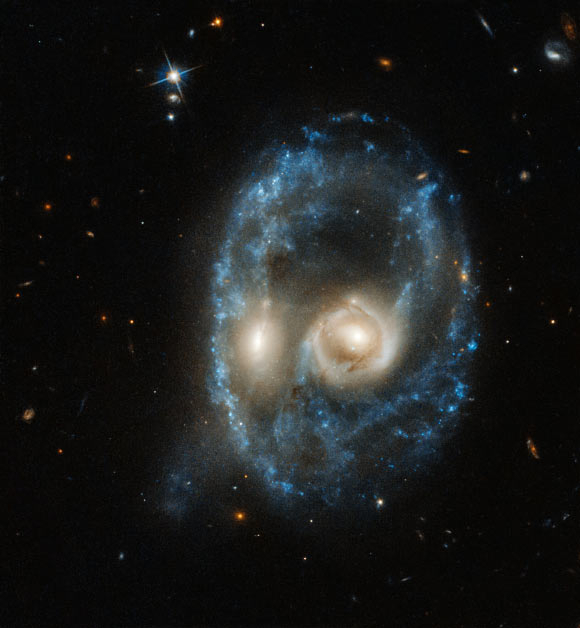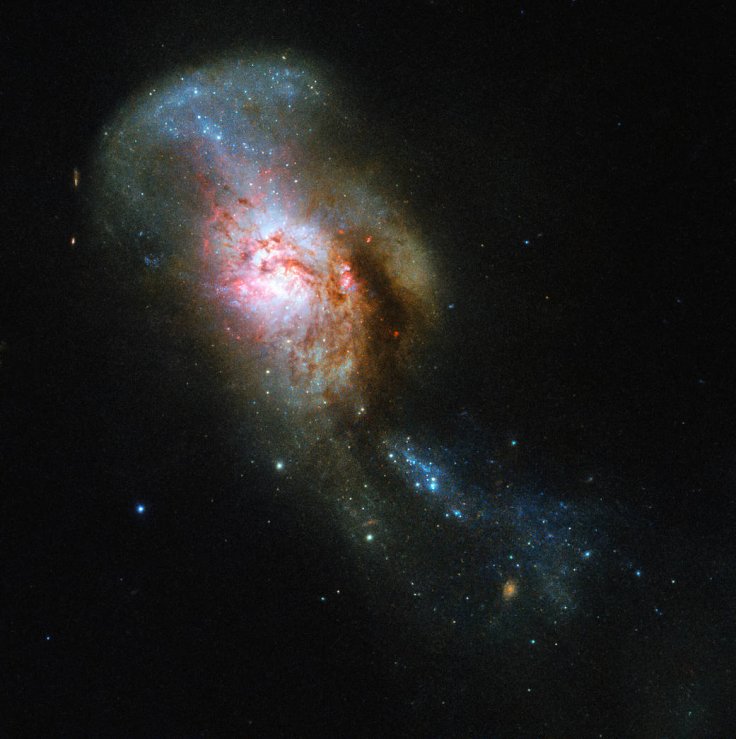
The Hubble Space Telescope of NASA and the European Space Agency (ESA) captured a stunning photo of a violent collision between two galaxies. As seen in the photo, the collision distorted the contents of the two galaxies and formed a massive cosmic object that resembles a ghostly face.
As the world celebrates the Halloween season, NASA and the ESA joined the festivities by releasing an eerie image of a ghostly face in space. According to the agencies, the strange cosmic object captured by their Hubble Space Telescope is a system known as Arp-Madore 2026-424, which was formed by the violent collision between two galaxies.
The ESA noted that this system is located about 704 million light-years from Earth. In the photo, the two galaxies that collided resemble a pair of glowing eyes. Since the two galaxies still remain relatively intact, the agency said they most likely have the same size. If one was bigger than the other, the smaller one would have most likely been immediately devoured during the collision.

According to the ESA, the collision between the two galaxies disturbed the discs of dust and gas inside them, causing them to expand outward. As the discs expanded, they began to form a ring filled with star formations around the two galaxies. This ring, which appears bluish in color, formed the overall shape of the ghostly face seen in the photo.
"This violent encounter gives the system an arresting ring structure, but only for a short amount of time," the ESA explained in a statement. "The crash has pulled and stretched the galaxies' discs of gas, dust, and stars outward, forming the ring of intense star formation that shapes the 'nose' and 'face' features of the system."
The ESA said that a ring forming around the collision between galaxies is a very rare occurrence. This only happens when the two galaxies crash into each other at a certain angle. Once this happens, the two galaxies interact with one another, causing their cosmic discs to expand.
"Ring galaxies are rare, and only a few hundred of them reside in our larger cosmic neighborhood," the ESA stated. "The galaxies have to collide at just the right orientation so that they interact to create the ring, and before long they will have merged completely, hiding their messy past."








